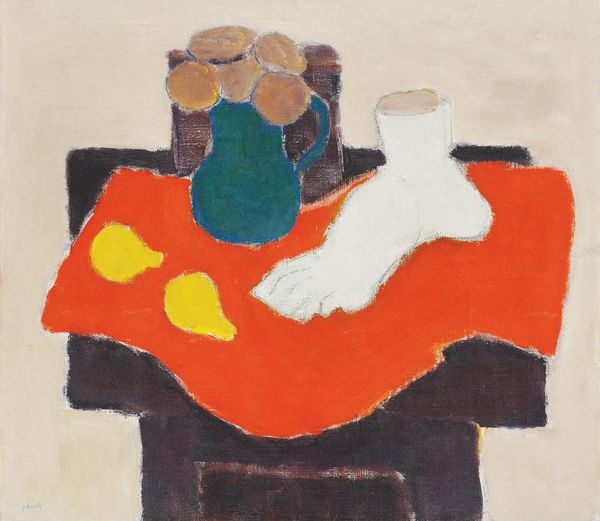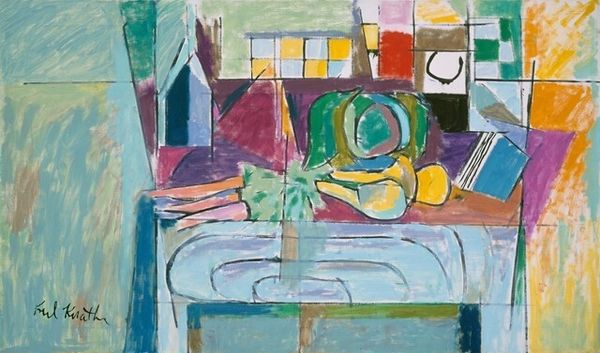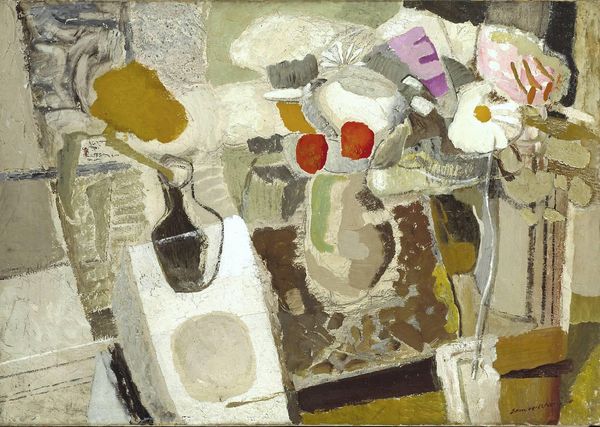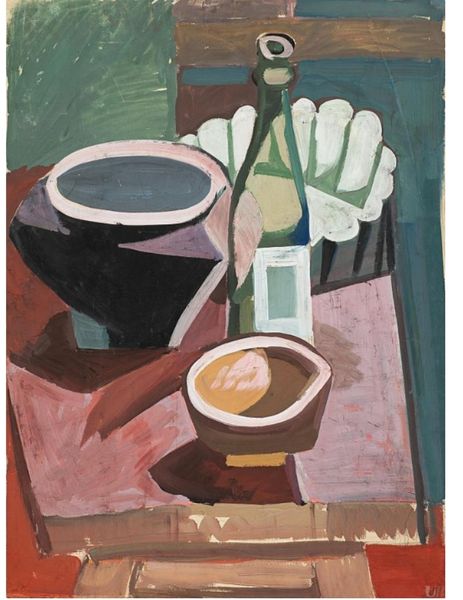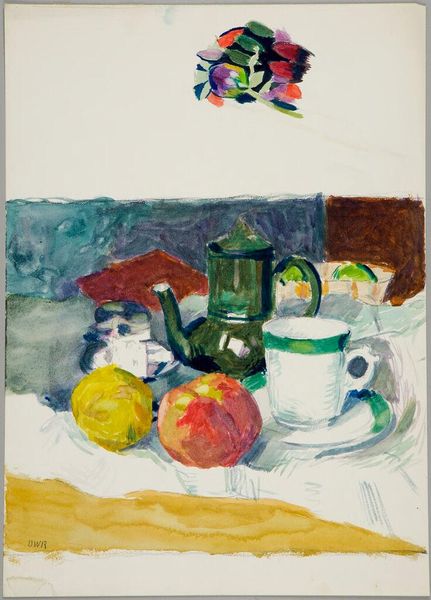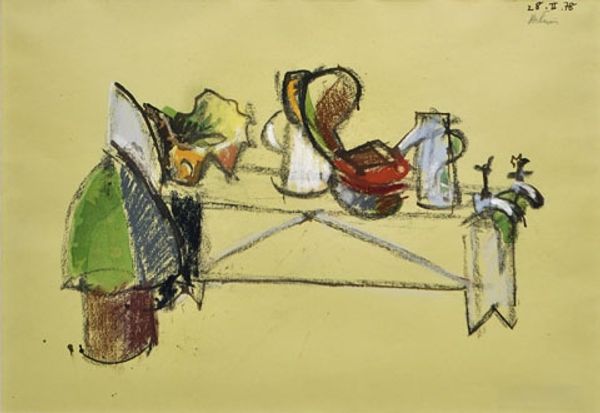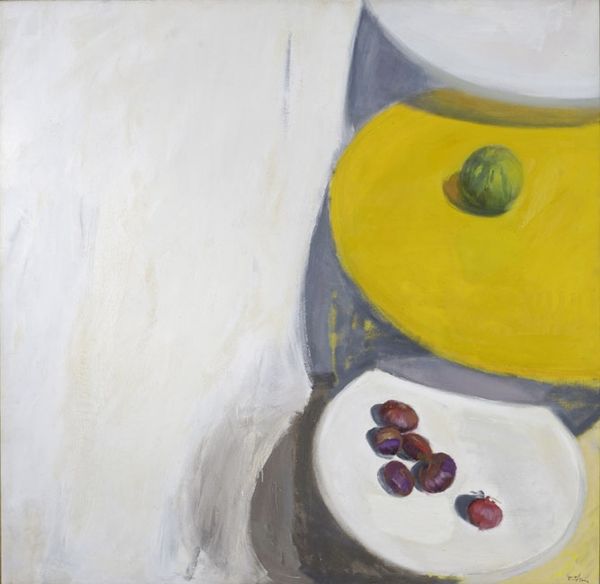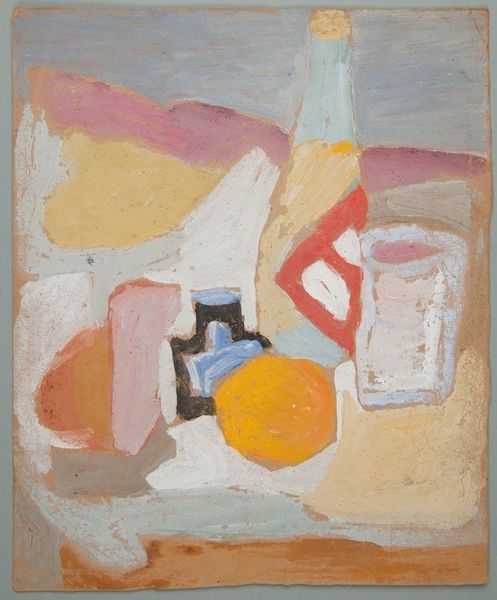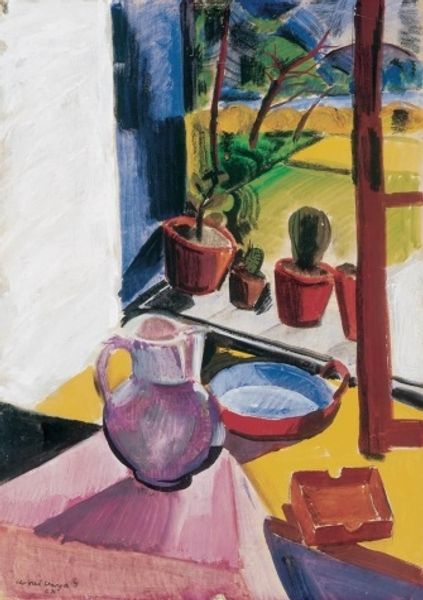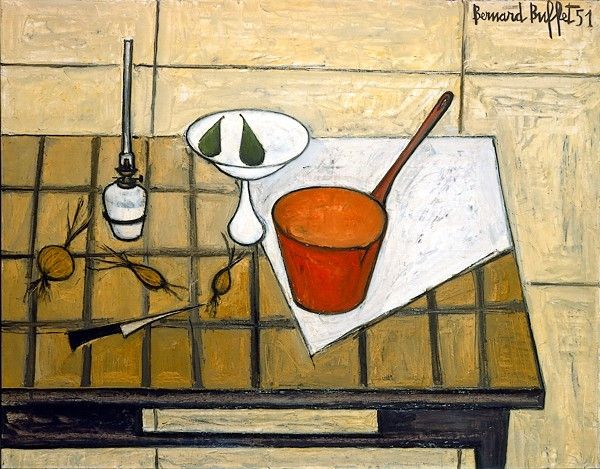
painting, acrylic-paint
#
acrylic
#
painting
#
fine art element
#
acrylic-paint
#
oil painting
#
modernism
Copyright: Panayiotis Tetsis,Fair Use
Editor: Panayiotis Tetsis's "Tables," created in 1987, strikes me immediately with its boldness, that unapologetic yellow acrylic paint just pops. It's a simple still life, but somehow quite arresting. What do you see in this piece, looking beyond the obvious objects depicted? Curator: For me, it’s all about the materiality. Look at how Tetsis layers the acrylic, thick in some places, almost transparent in others. The surface becomes as important as the subject. How does the choice of such a vibrant, almost synthetic, yellow contribute to your understanding? Editor: I hadn't really considered that, the synthetic nature of the yellow. It does give it a distinctly modern, almost manufactured feel, despite the everyday objects. Almost challenges what we think painting is meant to depict? Curator: Precisely. Tetsis isn't just representing a table, he's drawing our attention to the act of painting itself. It prompts us to consider the means of production, and the transformation of raw materials into something we consume as "art." Do you see that echoed anywhere else? Editor: The inclusion of the artist’s tools! The jar of brushes isn’t just a detail; it's literally showing us the instruments of creation, sitting right alongside the finished (or perhaps, unfinished) product. It makes the work a very transparent reflection on itself, right? Curator: Indeed. By making the process so visible, Tetsis dismantles the traditional hierarchy separating the artist's labor from the art object. The painting itself becomes a record of its own making, highlighting materiality over mere representation. Consider how much our interpretation relies on acknowledging art's socio-economic production! Editor: That’s fascinating. I hadn't really thought about it in terms of labor before. Seeing it now, though, the focus shifts from simply *what* is painted, to *how* and *why*. Curator: Absolutely. Tetsis forces us to consider the context and the making, changing how we engage with the work. Editor: That gives me a completely different appreciation for the painting. It’s not just a simple still life, it's a statement about art itself. Curator: Exactly! Art and its material means.
Comments
No comments
Be the first to comment and join the conversation on the ultimate creative platform.

